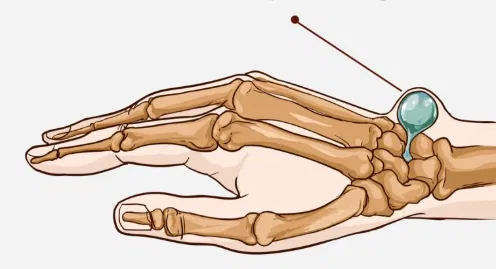ADVERTISEMENT
The best treatment for a wrist ganglion depends on its size, symptoms, and impact on daily activities. Here are some effective options:
1. Observation (Watch and Wait Approach)
If the cyst is small, painless, and does not interfere with movement, doctors may recommend monitoring it over time, as some ganglions disappear on their own.
2. Immobilization
Wearing a wrist brace or splint can help reduce pressure on the joint, preventing the ganglion from growing and alleviating discomfort.
3. Aspiration (Draining the Fluid)
A doctor can remove the fluid with a needle (aspiration), providing temporary relief. However, recurrence is common, as aspiration does not remove the cyst sac.
4. Surgery (Ganglion Excision)
If the ganglion causes persistent pain or limits wrist mobility, surgical removal may be the best option. Surgery has a lower recurrence rate compared to aspiration, as it removes the entire cyst sac.
When to See a Doctor
While ganglion cysts are not dangerous, you should seek medical advice if:
- The lump grows rapidly or changes in texture
- You experience persistent pain
- It causes numbness, tingling, or weakness in your wrist or fingers
- Wrist movement becomes restricted
Final Thoughts: Managing Wrist Ganglion Cysts
A wrist ganglion is a benign condition, but if it causes discomfort or limits mobility, treatment options are available. Non-invasive methods like bracing and aspiration can provide relief, while surgical removal may be necessary for severe cases.
💡 Did you find this article helpful? Share it with others who might benefit!
💬 Have you experienced a ganglion cyst before? Let us know your experience in the comments!
ADVERTISEMENT
